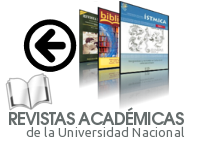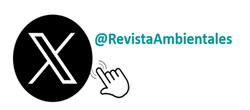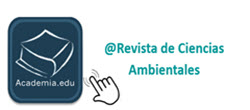Road Encroachment Near Protected Areas Alters the Natural Soundscape Through Traffic Noise Pollution in Costa Rica
DOI:
https://doi.org/10.15359/rca.52-1.2Keywords:
Anthrophony, biodiversity conservation, biophony, geophony, soundscape conservation, traffic volumeAbstract
Road networks are spatially disposed across landscapes and are differentially used by traffic, generating levels of noise that may negatively affect protected areas. The objective of this study is to quantify the length of road stretches in contact and in close proximity to protected areas, and to investigate differential effects parks may have in relation to traffic volumes and noise pollution. We measured road networks in proximity to protected areas using a geographic information system and the Atlas of Costa Rica. Noise and traffic volumes were quantified in three protected areas with direct adjacency with roads. We generated environmental sound maps to assess the influence of noise on natural sounds, such as those produced by streams (geophony) and birds (biophony). We recorded biophony close and far to the road in one of the protected areas. We found that 70 protected areas are directly or indirectly affected by road proximity. Noise was greater in roads with higher traffic usage than those with lower traffic usage, but the type of vehicles also influenced noise levels. Noise penetrated the forest with greater levels during the dry season than in the wet season. We found that the amount of biophony in seconds was lower close than far from the road, and that the stream sound was masked by traffic noise. Our results suggest that noise may contribute to habitat degradation through a decrease and loss of natural sounds, decreasing the quality of biodiversity protection. Interdisciplinary action and rigorous planning must be considered to avoid road encroachment on protected areas.References
Achilleos, G. A. (2011). The Inverse Distance Weighted interpolation method and error propagation mechanism – creating a DEM from an analogue topographical map. Journal of Spatial Science, 56(2), 283-304. Doi: 10.1080/14498596.2011.623348
Arévalo, J. E. and Knewhard, K. (2011). Traffic noise affects bird species in a protected tropical forest. Revista de Biología Tropical, 59(2), 969-980.
Arévalo J. E. and Ladle, R. J. (2016). Challenges to Forest Conservation. In: S. A. Molina-Murillo and C. Rojas (Eds.), The Paradigm of Forests and the Survival of the Fittest (pp. 172-195). USA: CRC Press. Doi: doi.org/10.1201/b19975-8
Arévalo, J. E., Honda, W., Arce-Arias, A. and Häger, A. (2017). Spatiotemporal variation of roadkills show mass mortality events for amphibians in a highly trafficked road adjacent to a national park, Costa Rica. Revista de Biología Tropical, 65(4), 1261-1276. doi: 10.15517/rbt.v65i4.27903
Caro, T. (2015). Roads through national parks: a successful case study. Tropical Conservation Science, 8(4): 1009-1016. Doi: 10.1177/194008291500800411
Chape, S., Harrison, J., Spalding, M. and Lysenko, I. (2005). Measuring the extent and effectiveness of protected areas as an indicator for meeting global biodiversity targets. Philosophical Transactions of the Royal Society B, 360(1454), 443-455. Doi: 10.1098/rstb.2004.1592
Coffin, A. W. (2007). From roadkill to road ecology: A review of the ecological effects of roads. Journal of Transport Geography, 15, 396-406. Doi: 10.1016/j.jtrangeo.2006.11.006
Dulac, J. (2013). Global land transport infrastructure requirements. Paris: International Energy Agency.
Eigenbrod, F., Hecnar, S. J. and Fahrig, L. (2009). Quantifying the Road-Effect Zone: Threshold Effects of a Motorway on Anuran Populations in Ontario, Canada. Ecology and Society, 14(1): 24. Doi: 10.5751/ES-02691-140124
Fahrig, L. (2003). Effects of habitat fragmentation on biodiversity. Annual Review of Ecology, Evolution, and Systematics, 34, 487-515. Doi: 10.1146/annurev.ecolsys.34.011802.132419
Farina, A. (2014). Soundscape Ecology: Principles, Patterns, Methods and Applications. Italy: Springer. Doi: 10.1007/978-94-007-7374-5
Francis, C. D., Ortega, C. P. and Cruz, A. (2010). Vocal frequency change reflects different responses to anthropogenic noise in two suboscine tyrant flycatchers. Proc. R. Soc. B., 282, 1-7. Doi: 10.1098/rspb.2010.1847
Forman, R. T. T., Sperling, D., Bissonette, J., Clevenger, A., Cutshall, C. D., Dale, V. H. and Winter, T. C. (2003). Road Ecology: Science and solutions. Washington D.C.: Island Press.
Francis, D. and Barber, J. R. (2013). A framework for understanding noise impacts on wildlife: an urgent conservation priority. Frontiers in Ecolology and the Environment, 11(6), 305-313. Doi: 10.1890/120183
Grade, A. M. and Sieving, K. E. (2016). When the birds go unheard: highway noise disrupts information transfer between bird species. Biology Letters, 12(4). Doi: 10.1098/rsbl.2016.0113
Holdridge, L. R. (1966). The life zone system. Adansonia, 6(2),199-203.
Hopcraft, J. G. C., Bigurube, G., Lembeli, J. D. and Borner, M. (2015). Balancing Conservation with National Development: A Socio-Economic Case Study of the Alternatives to the Serengeti Road. PLOS ONE, 10(7), e0130577. Doi: 10.1371/journal.pone.0130577
Kight, C. R. and Swaddle, J. P. (2015). Eastern Bluebirds Alter their Changes in the Acoustic Environment. Integrative and Comparative Biology, 55(3), 418-431. Doi: 10.1093/icb/icv070
Kleist, N. J., Guralnick, R. P., Cruz, A. and Francis, C .D. (2016). Anthropogenic noise weakens territorial response to intruder's songs. Ecosphere, 7(3), e01259. Doi: 10.1002/ecs2.1259
Laurence, W. F., Goosem, M. and Laurance, S. G. W. (2009). Impacts of roads and linear clearings on tropical forests. Trends in Ecology and Evolution, 24(12), 659-669. doi: 10.1016/j.tree.2009.06.009
Laurance, W. F., Peletier-Jellema, A., Geenen, B., Koster, H., Verweij, P., Van Dijck, P. and Van Kuijk, M. (2015). Reducing the global environmental impacts of rapid infrastructure expansion. Current Biology Magazine, 25, R255–R268. Doi: 10.1016/j.cub.2015.02.050
Leonard, R. J. and Hochuli, D. F. (2017). Exhausting all avenues: why impacts of air pollution should be part of road ecology. Frontiers in Ecology and the Environment, 15(8), 1-7. Doi: 10.1002/fee.1521
Marsh, D. M., Cosentino, B. J., Jones, K. S., Apodaca, J. J., Beard, K. H., Bell, J. M. and Vonesh, J. R. (2016). Effects of roads and land use on frog distributions across spatial scales and regions in the Eastern and Central United States. Diversity and Distributions, 23(2), 1-13. Doi: 10.1111/ddi.12516
McClure, C. J. W., Ware, H. E., Carlisle, J., Kaltenecker, G. and Barber, J. R. (2013). An experimental investigation into the effects of traffic noise on distributions of birds: avoiding the phantom road. Proceedings of the Royal Society B, 280(1773), 1-9. Doi: 10.1098/rspb.2013.2290
Monge-Nágera, J. (1996). Vertebrate mortality on tropical Highways: The Costa Rican case. Vida Silvestre Neotropical, 5(2), 154-156.
Payne S. R., Davies, W. J. and Adams, M. D. (2009). Research into the Practical and Policy Applications of Soundscapes Concepts and Techniques in Urban Areas (NANR 200). London: DEFRA.
Pomareda, E. (Octuber 17th 2012). Una amenaza real de atropellos de animales silvestres. Seminario Universidad. Recuperado de https://semanariouniversidad.com/opinion/una-amenaza-real-atropello-de-animales-silvestres/
Potvin D. A., Parris, K. M. and Mulder, R. A. (2011). Geographically pervasive effects of urban noise on frequency and syllable rate of songs and calls in silvereyes (Zosterops lateralis). Proceeding of the Royal Society B, 278(1717), 2464-2469. Doi: 10.1098/rspb.2010.2296
Phillips, C. J. C. (2009). Housing, handling and the environment for cattle. Principles of cattle production (chapter 5). Modular Texts, Queensland, Australia. Doi: 10.1079/9781845933975.0095
Proppe, D. S., Sturdy, C. B. and St. Clair, C. C. (2013). Anthropogenic noise decreases urban songbird diversity and may contribute to homogenization. Global Change Biology, 19(4), 1075-1084. Doi: 10.1111/gcb.12098
Reijnen, R., Foppen, R., Ter Braak, C. and Thissen, J. (1995). The Effects of Car Traffic on Breeding Bird Populations in Woodland. III. Reduction of Density in Relation to the Proximity of Main Roads. Journal of Applied Ecology, 32(1), 187-202. Doi: 10.2307/2404428
Rojas-Chacón, E. (2011). Atropello de vertebrados en una carretera secundaria en Costa Rica. Cuadernos de Investigación UNED, 3(1), 81-84. Doi: 10.22458/urj.v3i1.209
Rodewald, A. D. (2003). The importance of land uses within the landscape matrix. Wildlife Society Bulletin, 31(2), 586-592. Recovered from http://www.jstor.org/stable/3784344
Slabbekoorn H. (2013). Songs of the city: Noise-dependent spectral plasticity in the acoustic phenotype of urban birds. Animal Behaviour, 85(5), 1089-1099. Doi: 10.1016/j.anbehav.2013.01.021
Schmidt, R., Morrison, A. and Kunc, H. P. (2014). Sexy voices e no choices: male song in noise fails to attract females. Animal Behaviour, 94, 55-59. Doi: 10.1016/j.anbehav.2014.05.018
Shannon, G., McKenna, M. F., Angeloni, L. M., Crooks, K. R., Fristrup, K. M., Brown, E. and Wittemyer, G. (2016). A synthesis of two decades of research documenting the effects of noise on wildlife. Biological Reviews, 91(4), 982-1005. Doi: 10.1111/brv.12207
SINAC (Sistema Nacional de Áreas de Conservación). (2011). Políticas para las Áreas Silvestres Protegidas (ASP) del Sistema Nacional de Áreas de Conservación (SINAC). Recovered from http://www.sinac.go.cr/ES/docu/ASP/Pol%C3%ADticasASPSINAC2011.pdf
Soutullo, A. (2010). Extent of the Global Network of Terrestrial Protected Areas. Conservation Biology, 24(2), 362-362. Doi: 10.1111/j.1523-1739.2010.01465.x
TEC (Instituto Tecnológico de Costa Rica). (2014). Atlas de Costa Rica. Recovered from https://repositoriotec.tec.ac.cr/handle/2238/6749?show=full
Van der Ree, R., Smith, D. J. and Grilo, C. (2015). The ecological effects of linear infrastructure and traffic: challenges and opportunities of rapid global growth. In: R. Van der Reed, D. J. Smith and C. Grilo (Eds). The handbook of road ecology (pp. 1-9). U. K.: Wiley Blackwell. Doi: 10.1002/9781118568170.ch1
Published
How to Cite
Issue
Section
License

This work is licensed under a Creative Commons Attribution-NonCommercial-ShareAlike 4.0 International License.


















